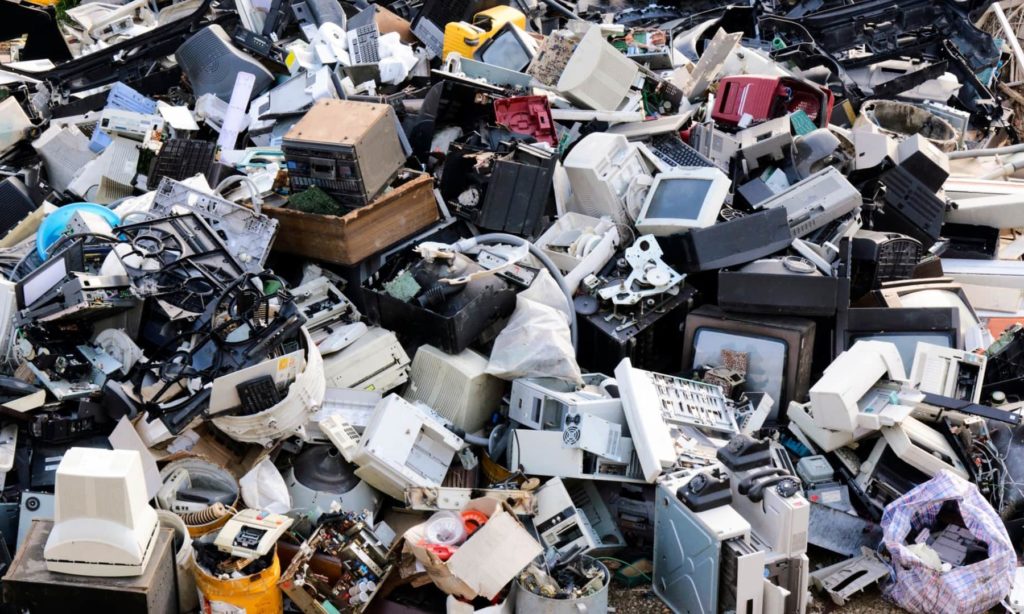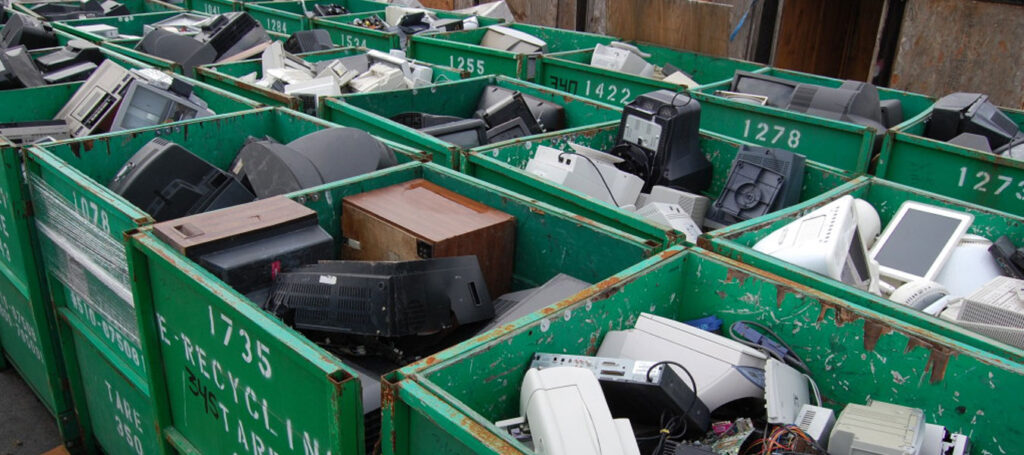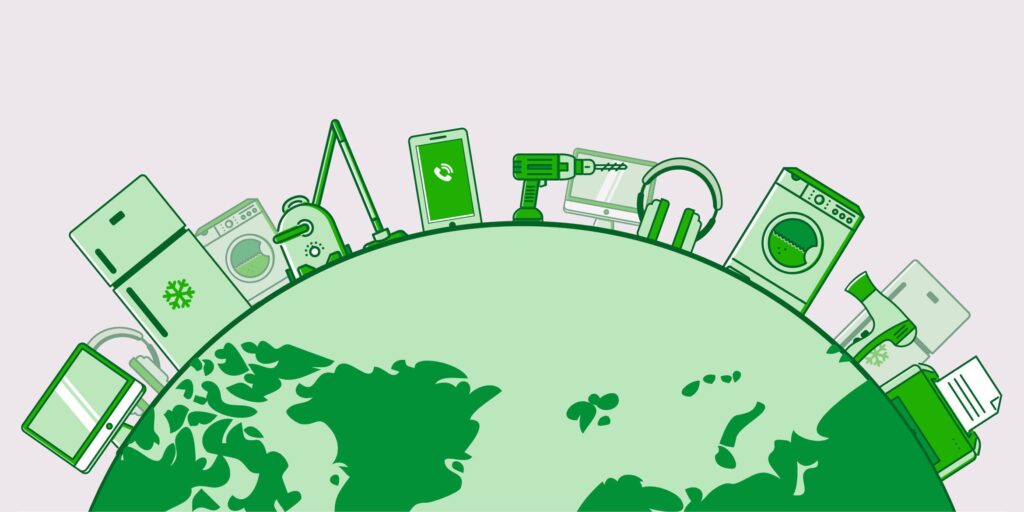
In our tech-driven world, electronic devices like smartphones, laptops, tablets, and televisions have become integral to our daily lives. However, with rapid advancements in technology, many of us are constantly upgrading our gadgets, contributing to a growing issue: electronic waste (e-waste). E-waste refers to discarded electrical or electronic devices, and the global volume of e-waste is expected to increase dramatically in the coming years. Improper disposal of e-waste can lead to significant environmental harm due to toxic chemicals found in electronics, such as lead, mercury, and cadmium.
Fortunately, there are several ways we can reduce e-waste, recycle electronics responsibly, and adopt more sustainable practices. In this guide, we’ll explore practical tips for reducing e-waste and offer eco-friendly disposal options to help keep our planet safer and cleaner.

The Growing Problem of Electronic Waste
Electronic waste is the fastest-growing waste stream globally, with over 50 million tons of e-waste generated each year. This number continues to rise as more people upgrade their electronics, often replacing functional devices for newer models. The environmental impact of e-waste is profound—if not properly handled, toxic substances from electronics can leach into the soil and water, causing pollution and endangering ecosystems and human health.
Many electronics contain valuable metals like gold, silver, and copper, which can be recycled and reused. However, a large portion of e-waste ends up in landfills or incinerators, where these materials are lost and harmful chemicals are released into the environment. Reducing e-waste through conscious consumption, reusing, and recycling can significantly reduce the environmental impact.
1. Extend the Life of Your Electronics
The best way to reduce electronic waste is by extending the life of your electronics as much as possible. Instead of discarding devices at the first sign of malfunction, consider repairing or upgrading them. Here’s how to do it:
A. Repair Instead of Replace
- Fixing Broken Electronics: Many electronics can be repaired rather than replaced. If your smartphone screen is cracked, get it repaired at a certified repair shop. Similarly, laptops with damaged keyboards or broken screens may be fixable. Repairing a device is often more eco-friendly than discarding it.
- DIY Repairs: For some items, DIY repairs may be an option. Online tutorials and guides can help you fix your electronics without needing professional help. This can save money, reduce waste, and teach you valuable skills.
B. Upgrade Instead of Buying New
- Upgrading Components: Sometimes, upgrading parts of your devices can breathe new life into them. For example, you can upgrade the RAM or replace the hard drive of your laptop instead of buying an entirely new machine. Similarly, swapping out the battery in your phone or tablet can extend its lifespan.
- Software Updates: Many devices slow down due to outdated software. Regular updates to the operating system and apps can improve performance and make older devices work better.
2. Donate or Sell Unwanted Electronics
If your electronics are still functional but no longer needed, consider donating or selling them rather than discarding them. This is a great way to reuse and reduce waste. Here’s how to make the most of your unwanted devices:
A. Donate to Charities or Non-Profits
- Tech for Good: Many non-profit organizations accept used electronics, particularly those in good condition, to distribute them to people in need. For instance, schools, community centers, and low-income families may benefit from donated laptops, smartphones, or tablets.
- Electronics Recycling Programs: Some charitable organizations specifically focus on accepting e-waste for safe recycling or reuse. This ensures that your old devices don’t end up in landfills.
B. Sell Your Used Devices
- Online Marketplaces: If your electronics are in good working order, you can sell them on platforms like eBay, Craigslist, or Facebook Marketplace. Not only does this help reduce waste, but it also gives someone else a chance to use the device, extending its life.
- Trade-In Programs: Many manufacturers and retailers offer trade-in programs where you can exchange your old devices for store credit or discounts on new purchases. Apple, for example, runs a trade-in program that allows customers to exchange their old devices for credit toward new ones.

3. Recycle Electronics Properly
When your devices can no longer be repaired, reused, or donated, recycling them is the next best option. Recycling e-waste ensures that valuable materials like metals, plastics, and glass are recovered and reused, while hazardous substances are safely handled. Here’s how to recycle electronics responsibly:
A. Use Certified Electronic Waste Recycling Centers
- Look for Certification: It’s essential to use certified e-waste recycling centers. Look for certifications like R2 (Responsible Recycling) or e-Stewards, which ensure that the recycling facility follows strict environmental and safety standards for handling e-waste.
- Find Local Recycling Drop-Off Points: Many cities and towns have e-waste recycling programs or designated drop-off points where you can leave your old electronics for responsible recycling. Check with local waste management or recycling centers to find these locations.
B. Recycling Electronics Through Retailers
- Retailer Take-Back Programs: Many electronics retailers offer take-back programs that allow you to drop off your old devices for recycling. Retailers like Best Buy, Staples, and Amazon provide convenient options to dispose of old electronics in an eco-friendly manner.
- Manufacturer Programs: Some electronics manufacturers run their own recycling programs. For example, Dell offers a free recycling program for its devices, and Samsung provides similar services for phones and TVs.
C. Remove Data and Personal Information
- Wipe Your Data: Before recycling any electronic device, always erase personal information, especially from smartphones, laptops, and tablets. Use data-wiping software to ensure that your data is completely deleted. This protects your privacy and ensures that your personal information doesn’t end up in the wrong hands.
4. Choose Sustainable Electronics When Buying New Devices
If you’re in the market for a new electronic device, choose one that is designed with sustainability in mind. Here’s how to make more eco-conscious decisions when purchasing electronics:
A. Look for Energy-Efficient Models
- Energy Star Certification: Choose energy-efficient devices that have the Energy Star label, which indicates that the product meets high standards for energy efficiency. This can help reduce the carbon footprint of using the device.
- Low Power Consumption: Opt for devices with low power consumption or ones that can be easily turned off when not in use, reducing overall energy demand.
B. Consider Eco-Friendly Materials
- Sustainable Materials: Some companies are now designing products with sustainable materials like recycled plastics, biodegradable components, and minimal packaging. Brands like Fairphone and Framework focus on modular, repairable devices that reduce e-waste over time.
- Eco-Packaging: Look for products that come in eco-friendly packaging. Avoid excessive plastic packaging, and choose products packaged in cardboard or other recyclable materials.
C. Support Brands with Take-Back Programs
- Many brands, such as Apple, Dell, and HP, offer take-back or trade-in programs for their products. This allows you to recycle your old devices directly with the manufacturer, ensuring they’re properly disposed of or refurbished.
5. Educate Yourself and Others on Electronic Waste
Reducing e-waste is a collective effort. Share information with friends, family, and colleagues about the importance of responsible electronics disposal and the environmental impact of improper e-waste handling. The more people understand the consequences of e-waste, the more likely they are to take steps to reduce it.
- Stay Informed: Keep yourself updated on local recycling regulations, new technologies in e-waste management, and eco-friendly brands.
- Organize E-Waste Drives: Many communities organize e-waste recycling drives, where residents can drop off their old electronics for safe disposal. Get involved or organize one in your neighborhood.

Conclusion: Reducing Electronic Waste for a Greener Future
The growing amount of electronic waste is a significant challenge for the environment, but there are many ways we can reduce our contribution to it. By extending the life of our devices through repairs and upgrades, donating or selling unwanted electronics, recycling responsibly, and making sustainable purchasing choices, we can all play a part in reducing e-waste and promoting a cleaner, greener planet. Every small step helps, and with awareness and action, we can minimize the impact of e-waste for future generations.